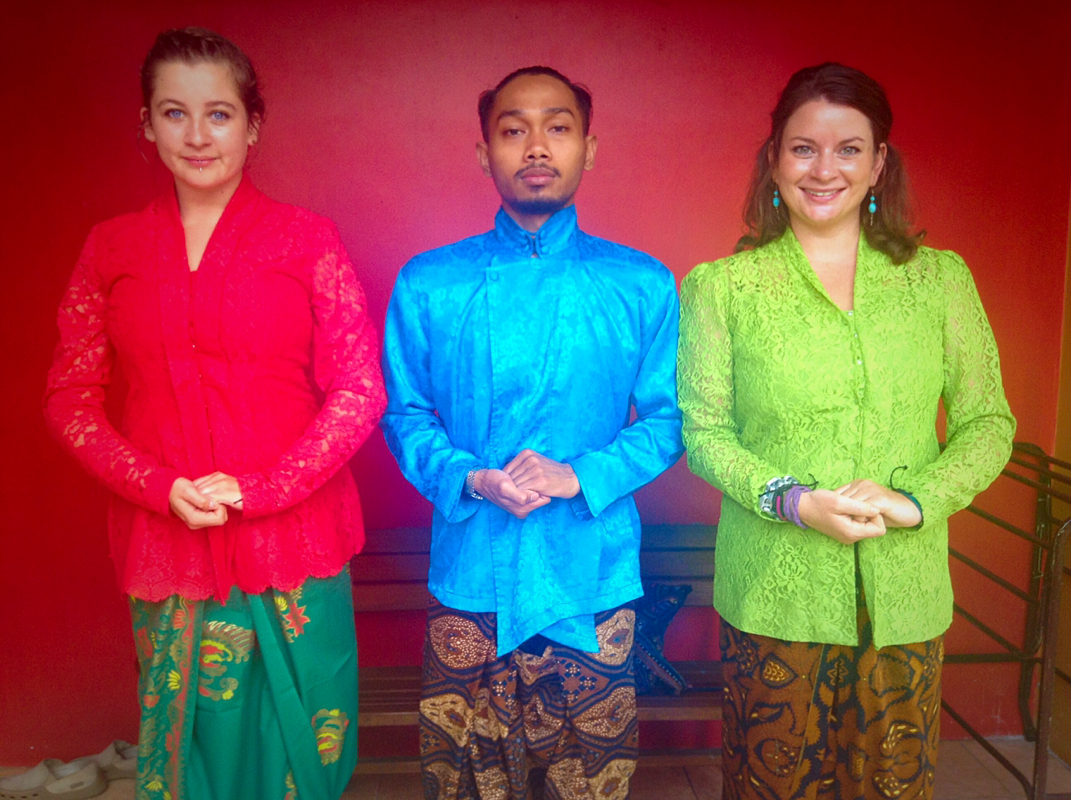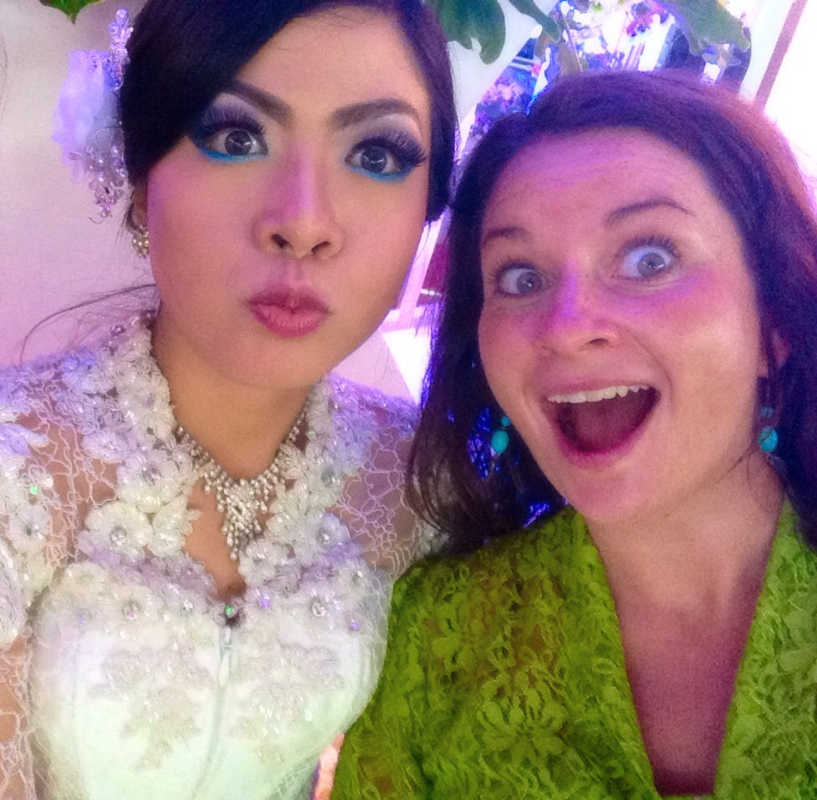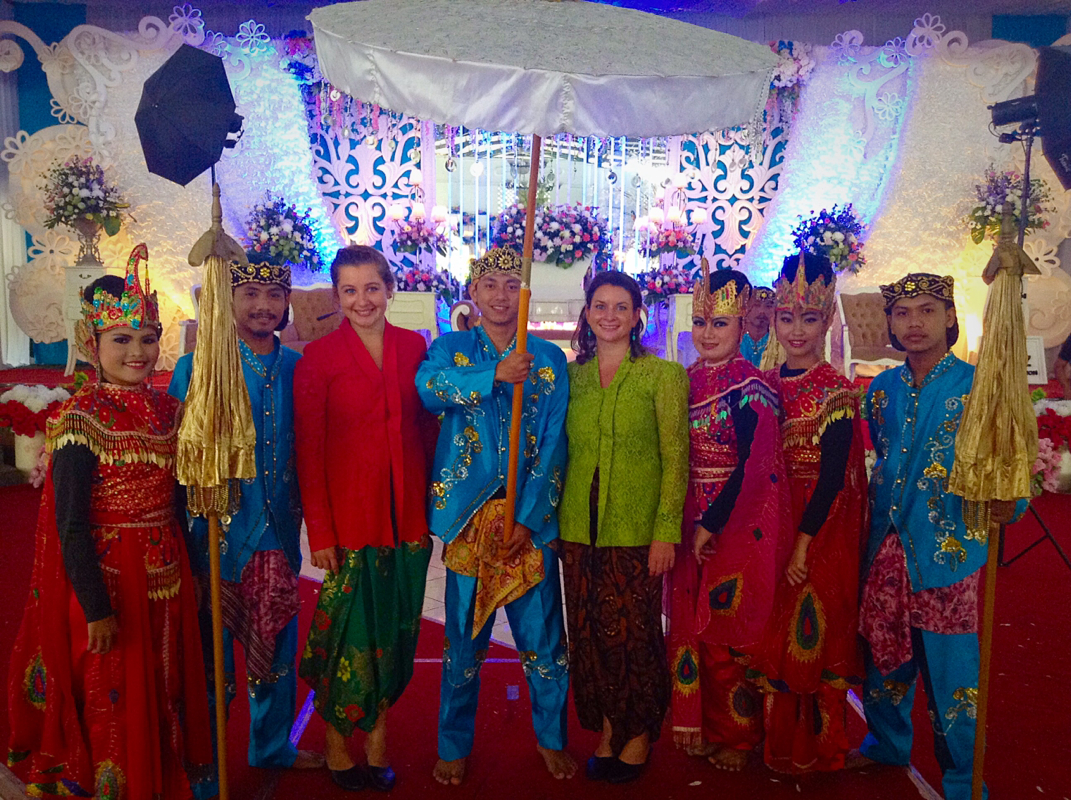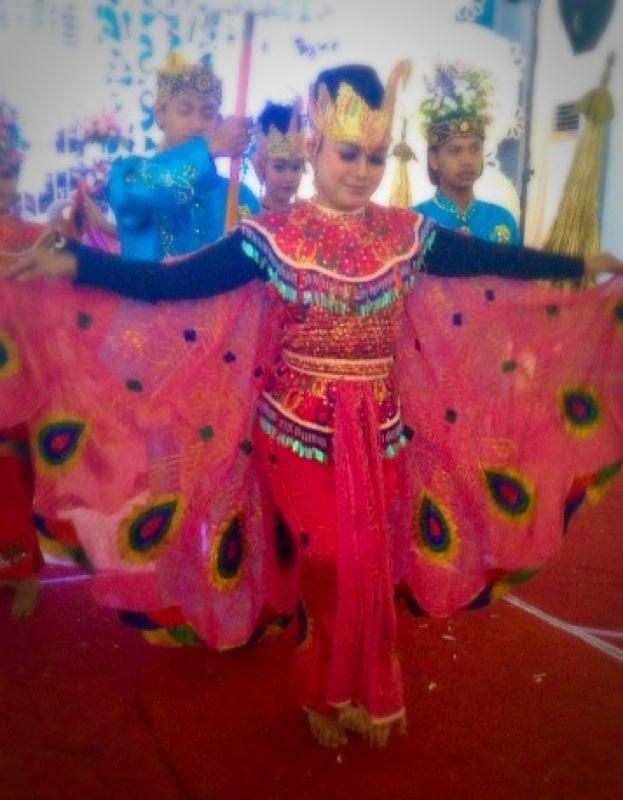We somehow managed to couchsurf our way into a traditional Sudanese (ethnic group specific to the island of Java & predominantly Muslim) wedding. After collecting our traditional Basak wedding attire in Bandung, we hit the road towards Tasikmalaya (West Java ) only to arrive to the groom's home at 1am the night before the wedding. Naturally, they were already sleeping, so we decided to play Shithead in the street before being let into the house.
We woke up early (6am) to begin traditional procedure: Ginger tea, Soto soup for breakfast, and a family sarong adjustment session (very binding). The traditional Basak wedding attire is extremely colorful--bright yellows, greens, royal blues, fierce reds, etc. The traditional clothing for Sundanese women consists of a kebaya, a long-sleeved, fitted lace blouse that is worn over another layer of clothing, and a sarong. As well as a sarong, a length of decorative cloth that is wrapped around the waist and hangs down to the ankles, which makes for an extremely difficult bathroom experience. Men also wear a sarong, but instead of a kebaya, they wear a long-sleeved batik shirt or a fitted, embroidered jacket. Of late, these traditional dresses are being influenced by Western and Islamic styles--as in sexy, stylish & cool.
They adorn the wedding couple, car & venue with fragrant flowers such as jasmines as well as other cheerful garlands and hair adornments. Then, the line of wedding guest cars is led to the venue by "Polisi" and the whole village stands on the streets waving & smiling. It looked like a funeral brigade, but felt like a parade. When we arrived, we lined up on a red carpet to enter. As we watched to colorful crowd mingle, we were handed an array of wedding gifts for the bride to bring into the venue and watch over while we took our seats. The ceremony began at 9am sharp and for the next couple hours, there was a series of Sudanese songs, speeches & sermons delivered. During that time, I discovered the couple had actually been married one week before and this was just the celebration where extensive family & friends come to congratulate and take photos. The typical wedding will have 200-500 guests attend--this one had 1,000!
Eventually, the bride & groom moved to two chairs in the front center & sat as all the guests gathered to stand around them. After one more song, they begin the "saweran" (throwing coins, mixed with flower petals and candy for the unmarried guests to collect and believed to bring better luck in romance). A frenzy ensued & I wound up with two candies & one coin wrapped in plastic with a special note inside, which read #7. This was a door prize that won me a sweet tas (purse) fashionably fit for an 8-year-old girl, which is who I gave it to later.
Next, the bride & groom are summoned upon for "huap lingkung"(a tradition in which the bride and groom feed each other by hand, with arms entwined to symbolize love and affection). Then comes the "bakakak hayam" (when the bride and groom rip apart a grilled chicken through holding each of its leg; a traditional way to determine which one will have the most financial success, which is the one that get the larger or head part).
Then, we all stand again for a traditional Merak dance (peacock dance). This hilarious interpretive dance tells about the beauty of the male peacock which aims to attract the female peacock. Every movement of the dance is full of cheer and happiness, so this dance is used as a gift for the visitors or to welcome the groom to the altar in the wedding ceremony.
Finally, the wedding feast begins while the wedding couple prepares for five hours worth of photos with family & friends.






 RSS Feed
RSS Feed
